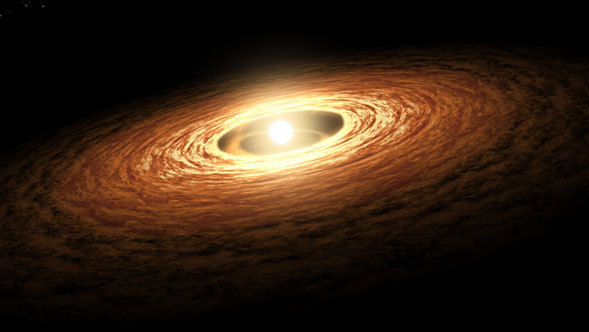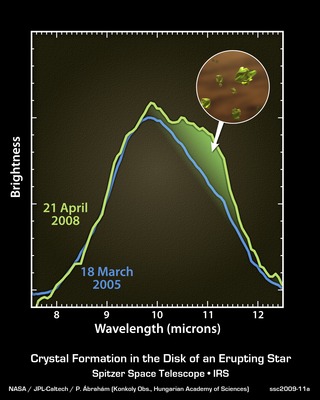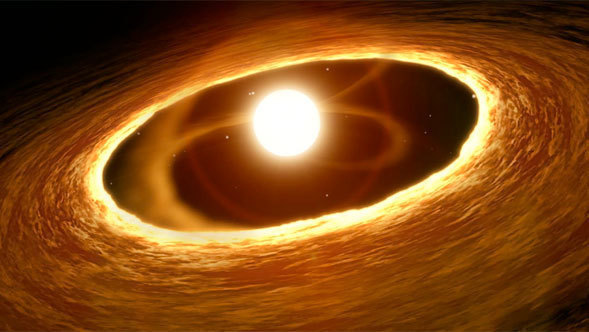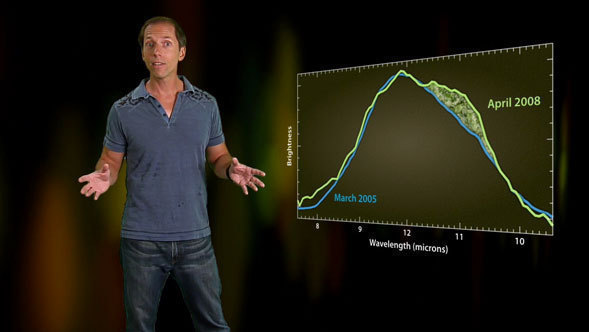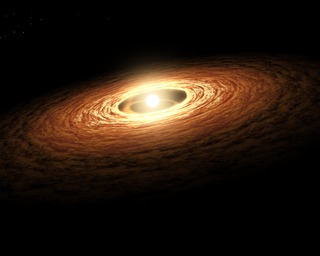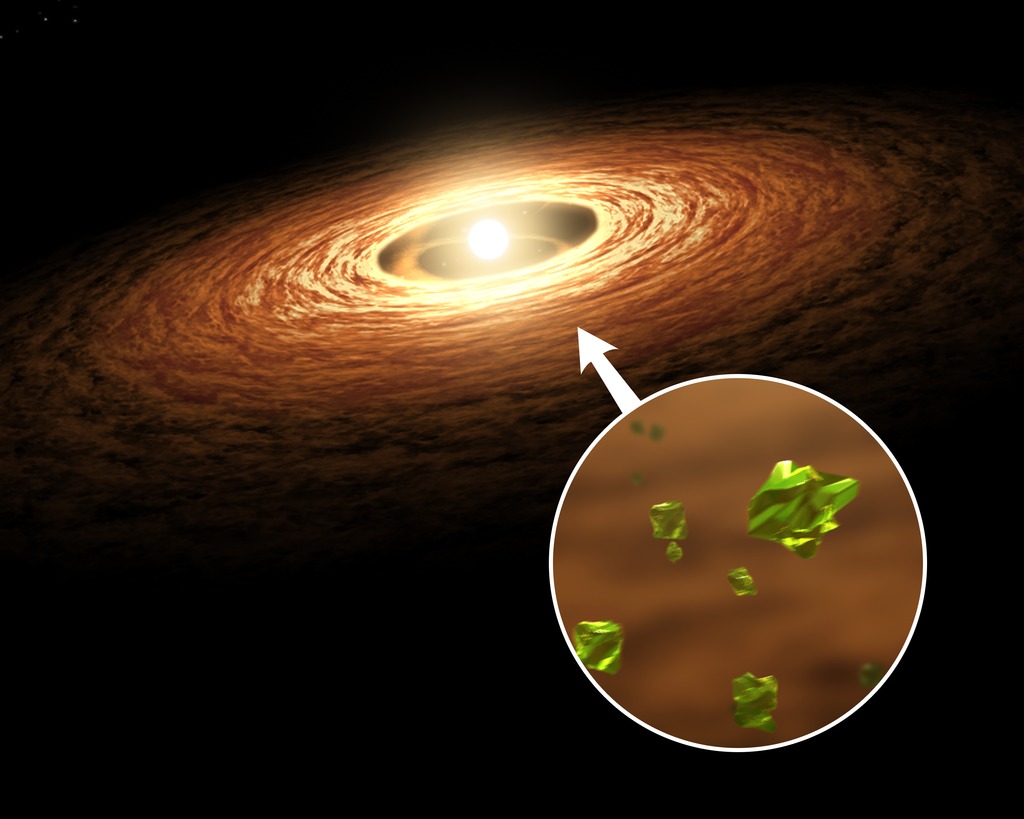
Credit: NASA/JPL-Caltech/T. Pyle
Artwork • May 13th, 2009 • ssc2009-11b
ssc2009-11b
This artist's concept illustrates how silicate crystals like those found in comets can be created by an outburst from a growing star. The image shows a young sun-like star encircled by its planet-forming disk of gas and dust. The silicate that makes up most of the dust would have begun as non-crystallized, amorphous particles.
Streams of material are seen spiraling from the disk onto the star increasing its mass and causing the star to brighten and heat up dramatically. The outburst causes temperatures to rise in the star's surrounding disk.
When the disk warms from the star's outburst, the amorphous particles of silicate melt. As they cool off, they transform into forsterite (see inset), a type of silicate crystal often found in comets in our solar system.
In April 2008, NASA's Spitzer Space Telescope detected evidence of this process taking place on the disk of a young sun-like star called EX Lupi.
About the Object
- Name
- EX Lupi
- Type
- Star > Circumstellar Material > Disk > Protoplanetary
- Star > Evolutionary Stage > Young Stellar Object
